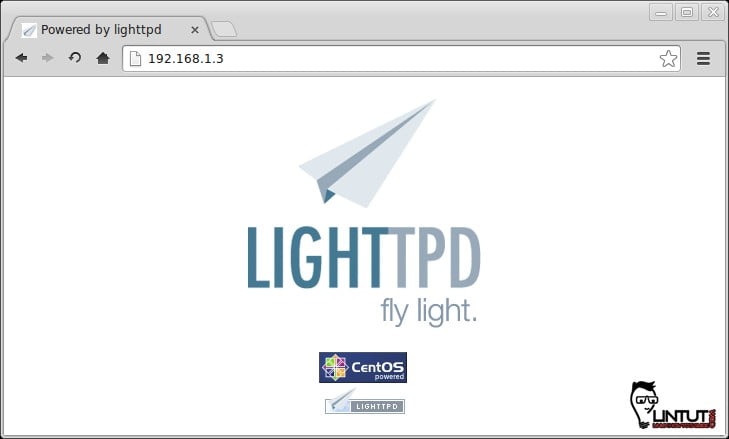lighttpd is a secure, fast, compliant, and very flexible web-server that has been optimized for high-performance environments. It has a very low memory footprint compared to other webservers and takes care of cpu-load. Its advanced feature-set (FastCGI, CGI, Auth, Output-Compression, URL-Rewriting and many more) make lighttpd the perfect webserver-software for every server that suffers load problems.
Features
- Load balancing FastCGI, SCGI and HTTP proxy support
- chroot support
- select()-/poll()-/epoll() based web server
- Support for more efficient event notification schemes like kqueue and epoll
- Conditional rewrites (mod_rewrite)
- TLS/SSL with SNI support, via OpenSSL.
- Authentication against an LDAP server
- RRDtool statistics
- Rule-based downloading with possibility of a script handling only authentication
- Server Side Includes support (but not server-side CGI)
- Flexible virtual hosting
- Modules support
- Cache Meta Language (currently being replaced by mod_magnet) using the Lua programming language
- Minimal WebDAV support
- Servlet (AJP) support (in versions 1.5.x and up)
- HTTP compression using mod_compress and the newer mod_deflate (1.5.x)
- Light-weight (less than 1 MB)
- Single-process design with only several threads. No processes or threads started per connection.
This tutorial shows how you can install Lighttpd on a Centos 6.5 server with PHP5 support (through PHP-FPM) and MariaDB support.
Because Lighttpd and PHP-FPM are not available from the official CentOS repositories, we need to enable the Remi and Epel repository.
Installing MariaDB 5.5.34
We highly recommended to use custom MariaDB YUM repository to install. Create a repo file under/etc/yum.repos.d/MariaDB.repo, Copy and paste following line under MariaDB repo:
Add repository on Centos 6 32-bit
# vi /etc/yum.repos.d/MariaDB.repo
and paste following line:
[mariadb] name = MariaDB baseurl = http://yum.mariadb.org/5.5/centos6-x86 gpgkey=https://yum.mariadb.org/RPM-GPG-KEY-MariaDB gpgcheck=1
Add repository on Centos 6 64-bit
[mariadb] name = MariaDB baseurl = http://yum.mariadb.org/5.5/centos6-amd64 gpgkey=https://yum.mariadb.org/RPM-GPG-KEY-MariaDB gpgcheck=1
Once you’ve placed MariaDB.repo file under /etc/yum.repos.d/. Let’s install with following YUM command:
# yum install MariaDB-server MariaDB-client -y
After complite installation process, start MariaDB width following command:
# service mysql start
Set MariaDB to start on boot:
# chkconfig mysql on
Read also: How to install MariaDB 5.5.33a Database on RHEL/CentOS/Fedora and Debian/Ubuntu linux
Installing Lighttpd
To install lighttpd enter following command:
# yum install lighttpd
Then we create the system startup links for Lighttpd (so that Lighttpd starts automatically whenever the system boots) and start it:
# chkconfig lighttpd on # service lighttpd start
Disale IPv6 support:
Open /etc/lighttpd/lighttpd.conf
# vi /etc/lighttpd/lighttpd.conf
and change server.use-ipv6 from enable to disable:
[...] ## ## Use IPv6? ## server.use-ipv6 = "disable" [...]
Now, start lighttpd service:
# service lighttpd start
Direct your browser to http://ip.add.re.ss, and you should see the following page:
Lighttpd’s default document root is /var/www/lighttpd/ on CentOS 6.5, and the configuration file is /etc/lighttpd/lighttpd.conf.
Install php 5.4.2.3 width MariaDB (mysql) support
Type following command:
# yum --enablerepo=remi install php-fpm lighttpd-fastcgi php-mysql php-gd php-imap php-ldap php-odbc php-pear php-xml php-xmlrpc php-pecl-apc
PHP-FPM is a daemon process that runs a FastCGI server on port 9000.
Open /etc/php-fpm.d/www.conf…
# vi /etc/php-fpm.d/www.conf
and set user and group to lighttpd:
[...] ; Unix user/group of processes ; Note: The user is mandatory. If the group is not set, the default user's group ; will be used. ; RPM: apache Choosed to be able to access some dir as httpd user = lighttpd ; RPM: Keep a group allowed to write in log dir. group = lighttpd [...]
Create the system startup links for PHP-FPM and start it:
# chkconfig php-fpm on # service php-fpm start
To enable PHP5 in Lighttpd, we must modify two files, /etc/php.ini and /etc/lighttpd/lighttpd.conf. First we open /etc/php.ini and uncomment the line cgi.fix_pathinfo=1:
# vi /etc/php.ini
[...] ; cgi.fix_pathinfo provides *real* PATH_INFO/PATH_TRANSLATED support for CGI. PHP's ; previous behaviour was to set PATH_TRANSLATED to SCRIPT_FILENAME, and to not grok ; what PATH_INFO is. For more information on PATH_INFO, see the cgi specs. Setting ; this to 1 will cause PHP CGI to fix its paths to conform to the spec. A setting ; of zero causes PHP to behave as before. Default is 1. You should fix your scripts ; to use SCRIPT_FILENAME rather than PATH_TRANSLATED. ; http://www.php.net/manual/en/ini.core.php#ini.cgi.fix-pathinfo cgi.fix_pathinfo=1 [...]
Then we open /etc/lighttpd/modules.conf and uncomment the line include “conf.d/fastcgi.conf”:
# vi /etc/lighttpd/modules.conf
[...] ## ## FastCGI (mod_fastcgi) ## include "conf.d/fastcgi.conf" [...]
Next open /etc/lighttpd/conf.d/fastcgi.conf:
# vi /etc/lighttpd/conf.d/fastcgi.conf
And add following line at the end of the file:
[...]
fastcgi.server += ( ".php" =>
((
"host" => "127.0.0.1",
"port" => "9000",
"broken-scriptfilename" => "enable"
))
)
[...]
Then we restart Lighttpd:
# service lighttpd restart
Testing installation
The document root of the default web site is /var/www/lighttpd/. We will now create a small PHP file (info.php) in that directory and call it in a browser. The file will display lots of useful details about our PHP installation, such as the installed PHP version.
# vi /var/www/lighttpd/info.php
